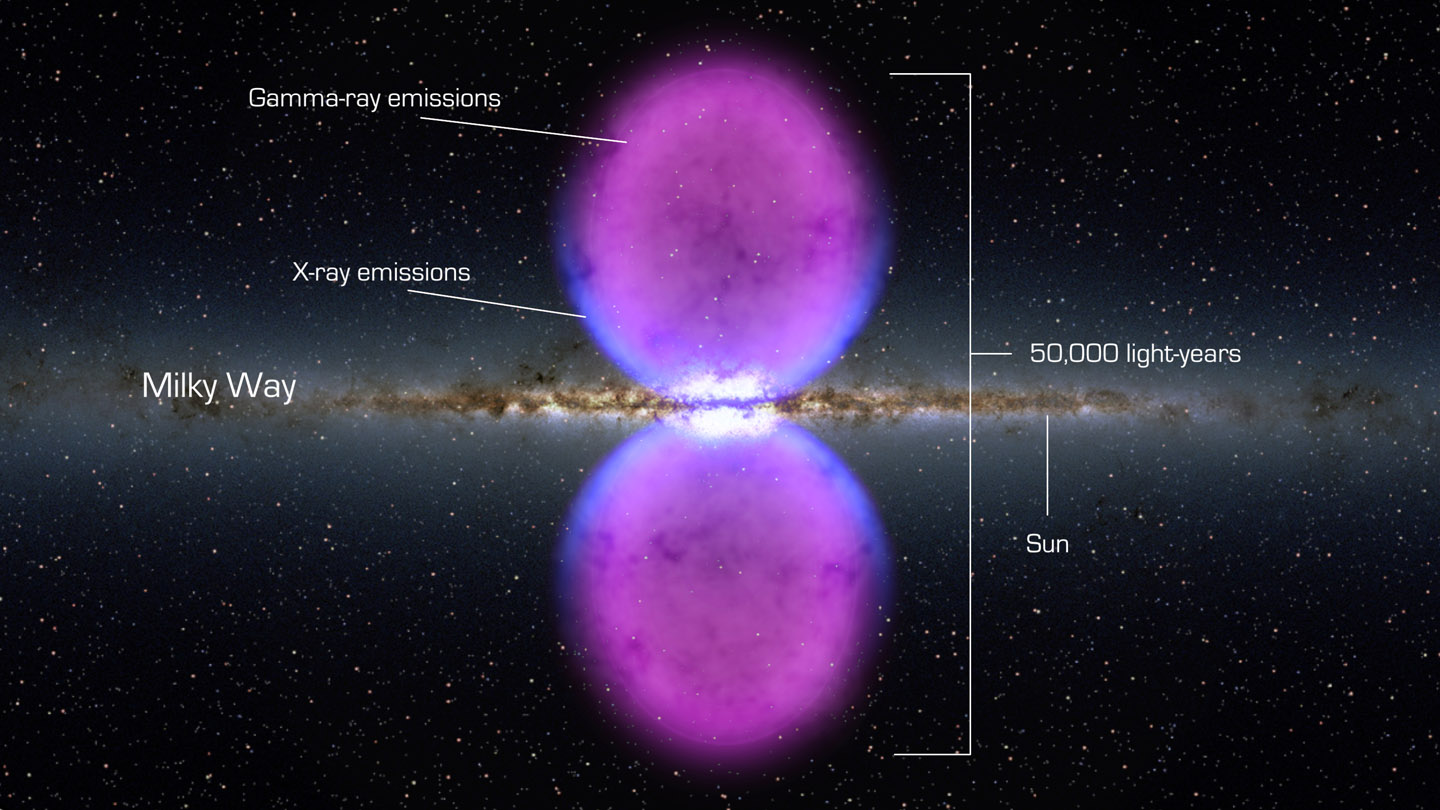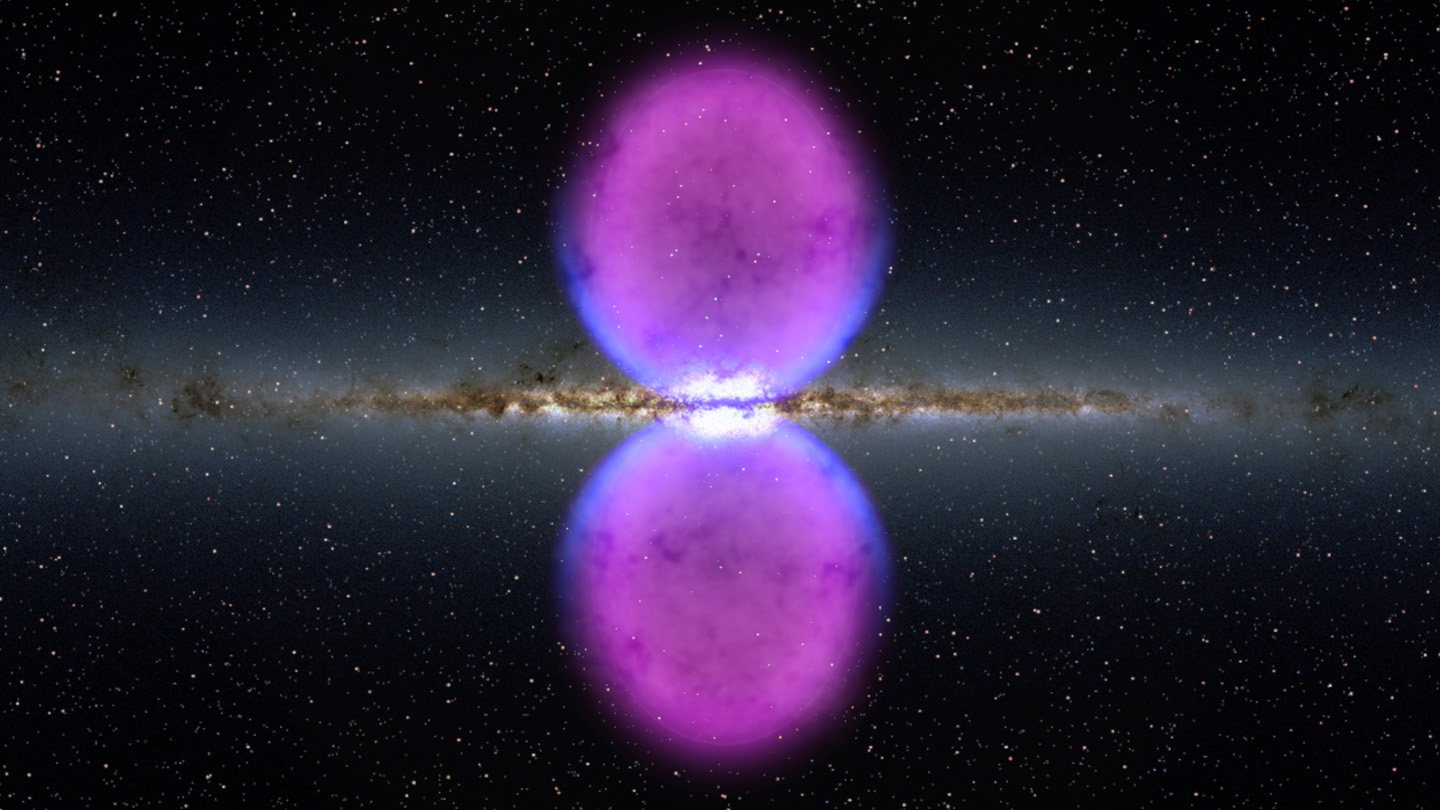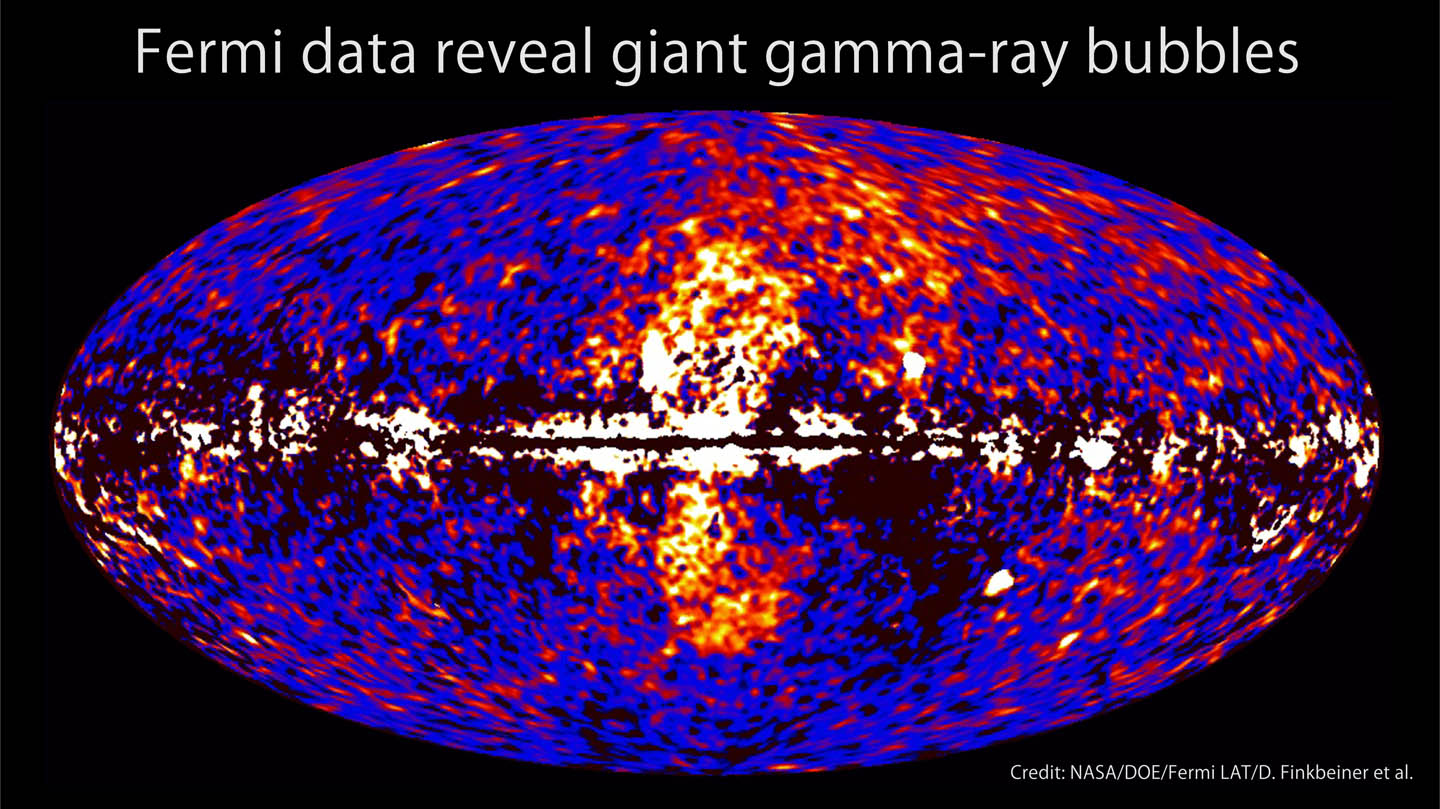Image List
-

From end to end, the newly discovered gamma-ray bubbles extend 50,000 light-years, or roughly half of the Milky Way's diameter, as shown in this illustration. Hints of the bubbles' edges were first observed in X-rays (blue) by ROSAT, a Germany-led mission operating in the 1990s. The gamma rays mapped by Fermi (magenta) extend much farther from the galaxy's plane.
NASA/GSFC -

From end to end, the newly discovered gamma-ray bubbles extend 50,000 light-years, or roughly half of the Milky Way's diameter, as shown in this illustration. Hints of the bubbles' edges were first observed in X-rays (blue) by ROSAT, a Germany-led mission operating in the 1990s. The gamma rays mapped by Fermi (magenta) extend much farther from the galaxy's plane.
NASA/GSFC -

A giant gamma-ray structure was discovered by processing Fermi all-sky data at energies from 1 to 10 billion electron volts, shown here. The dumbbell-shaped feature (center) emerges from the galactic center and extends 50 degrees north and south from the plane of the Milky Way, spanning the sky from the constellation Virgo to the constellation Grus.
NASA/DOE/Fermi LAT/D. Finkbeiner et al.